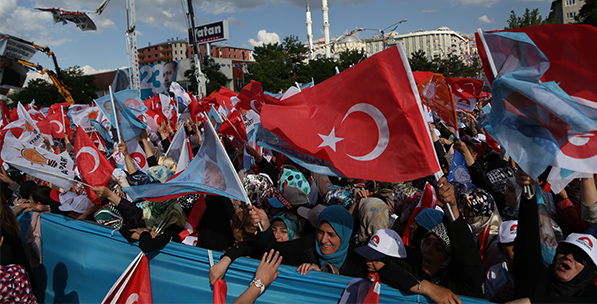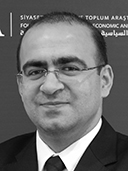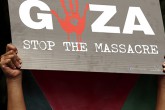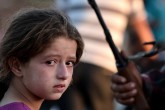Following events, as they are shown by the media, is not enough to comprehend the upcoming Turkish presidential elections. To really understand what’s going on, an analysis of several factors in Turkey’s history of modernisation, Kemalism and most importantly the identity of the Turkish voter is needed.
Such an analysis would require some knowledge of Turkey’s political sociology. However, the western media’s emotional attachment to Turkish secularists makes it impossible for it to offer such an objective examination.
What is meant by ‘objective’ here is nothing but a sound and consistent analysis of the elections. Once the elections are over, the picture becomes clear anyway. It becomes easier to see who was more accurate, whose assessments were inconsistent.
The polling data offered by ANAR polling firm gets us closest to the type of analysis that is needed. ANAR’s polling results shows that 90 percent of the eligible voters intend to vote in the upcoming elections. Since the day of the elections coincides with a Ramadan holiday, this number might be slightly lower.
However, it should be remembered that the turnout for the elections held on 30 March, 2013 was also approximately 90 percent. This piece of information is important to understand the extent of the Erdogan’s AK Party’s success and the current nature of Turkish politics.
To get almost 50 percent of the votes in a race with four actively campaigning political party – in elections where the turnout rate comes close to the number of eligible votes – is a significant success.
The ratio of voter turnout at the presidential elections and the percentage of votes for current prime minster and AK Party head, Erdogan will show a reverse correlation. The lower the turnout, the higher Erdogan’s votes will be. The key to understand this is the fact that the AK Party constituencies consistently show high turnout rates. In other words, while the voters for Erdogan will show up, the same cannot be said for the opposition.
Another issue that can factor into the turnout rate for the opposition is the fact that neither of the two opposition parties that jointly nominated Ekmeleddin Ihsanoglu will fully stand behind their candidate.
The approval rate for the joint candidate seems to be low and stands at just 70 percent among the CHP (the Republican People’s Party) voters and around 60 percent among the MHP (Nationalist Movement Party).
On the other hand, it seems that Erdogan has the full approval of his own constituency. Although the third candidate Selahaddin Demirtas, of the Kurdish Peace and Democracy Party, enjoys approval rates around 80 percent among his registered party voters, the majority of Kurds continue to vote for Erdogan. The Kurds approval of the peace process Erdoğan initiated to resolve Turkey’s long-standing Kurdish conflict is clearly felt in the presidential race.
One of the biggest problems the Turkish opposition still faces is that they can’t seem to break through the barriers of their geographical areas of support. For instance, the CHP seems to have significant voters base only in three of the seven districts in Turkey.
The CHP seems to receive the majority of its votes from coastal districts where laicism is a significant part of the culture. Similarly, the MHP receives the majority of his votes from the cities in two districts out of seven.
The Kurdish political movement, clearly, receive their votes from the two districts that have higher populations of Kurdish constituents, but it must be stressed that even in these districts that have high Kurdish populations, the party of preference is still the AK Party.
In other words, the Kurdish political movement fails to enjoy full support of Kurdish constituents even in the face of a thirty-year armed conflict and unconscionable repression from the Kemalist tutelage regime.
The AK Party, on the other hand, is the preferred party in a
In this article
- Domestic Policy
- Opinion
- 2013
- Elections
- Kemalism
- Kurdish Peace Process
- Kurdish Population
- Opposition
- Presidential Election
- Recep Tayyip Erdoğan
- The President of the Republic of Türkiye
- Turkish Opposition
- Turkish President
- Türkiye's Justice and Development Party | AK Party (AK Parti)
- Türkiye's Opposition
- Türkiye's Republican People's Party (CHP)
- Türkiye’s Nationalist Movement Party (MHP)
- United States (US)
- Western Media
- Western World



